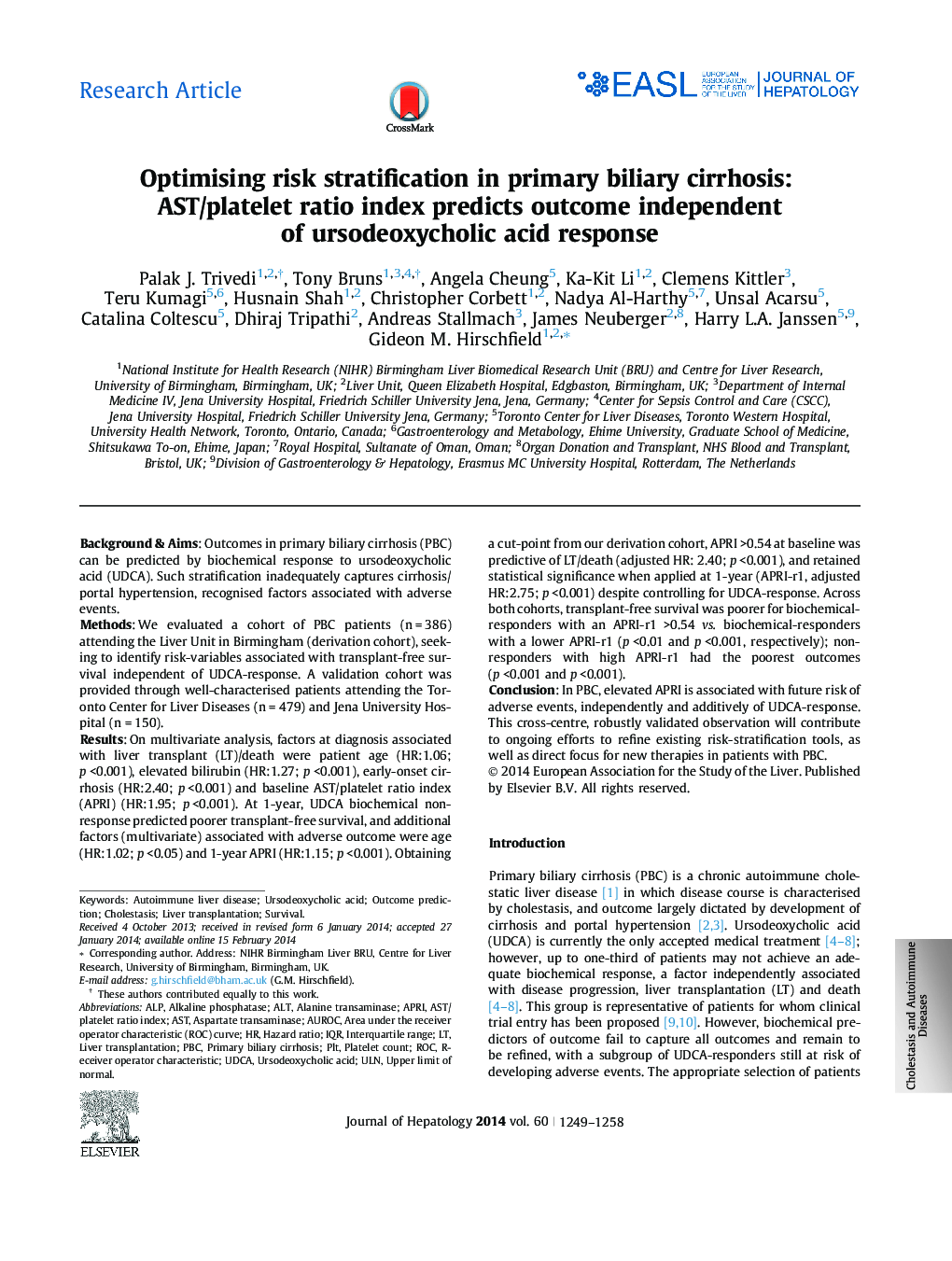| کد مقاله | کد نشریه | سال انتشار | مقاله انگلیسی | نسخه تمام متن |
|---|---|---|---|---|
| 6103912 | 1590326 | 2014 | 10 صفحه PDF | دانلود رایگان |

Background & AimsOutcomes in primary biliary cirrhosis (PBC) can be predicted by biochemical response to ursodeoxycholic acid (UDCA). Such stratification inadequately captures cirrhosis/portal hypertension, recognised factors associated with adverse events.MethodsWe evaluated a cohort of PBC patients (n = 386) attending the Liver Unit in Birmingham (derivation cohort), seeking to identify risk-variables associated with transplant-free survival independent of UDCA-response. A validation cohort was provided through well-characterised patients attending the Toronto Center for Liver Diseases (n = 479) and Jena University Hospital (n = 150).ResultsOn multivariate analysis, factors at diagnosis associated with liver transplant (LT)/death were patient age (HR:1.06; p <0.001), elevated bilirubin (HR:1.27; p <0.001), early-onset cirrhosis (HR:2.40; p <0.001) and baseline AST/platelet ratio index (APRI) (HR:1.95; p <0.001). At 1-year, UDCA biochemical non-response predicted poorer transplant-free survival, and additional factors (multivariate) associated with adverse outcome were age (HR:1.02; p <0.05) and 1-year APRI (HR:1.15; p <0.001). Obtaining a cut-point from our derivation cohort, APRI >0.54 at baseline was predictive of LT/death (adjusted HR: 2.40; p <0.001), and retained statistical significance when applied at 1-year (APRI-r1, adjusted HR:2.75; p <0.001) despite controlling for UDCA-response. Across both cohorts, transplant-free survival was poorer for biochemical-responders with an APRI-r1 >0.54 vs. biochemical-responders with a lower APRI-r1 (p <0.01 and p <0.001, respectively); non-responders with high APRI-r1 had the poorest outcomes (p <0.001 and p <0.001).ConclusionIn PBC, elevated APRI is associated with future risk of adverse events, independently and additively of UDCA-response. This cross-centre, robustly validated observation will contribute to ongoing efforts to refine existing risk-stratification tools, as well as direct focus for new therapies in patients with PBC.
Journal: Journal of Hepatology - Volume 60, Issue 6, June 2014, Pages 1249-1258